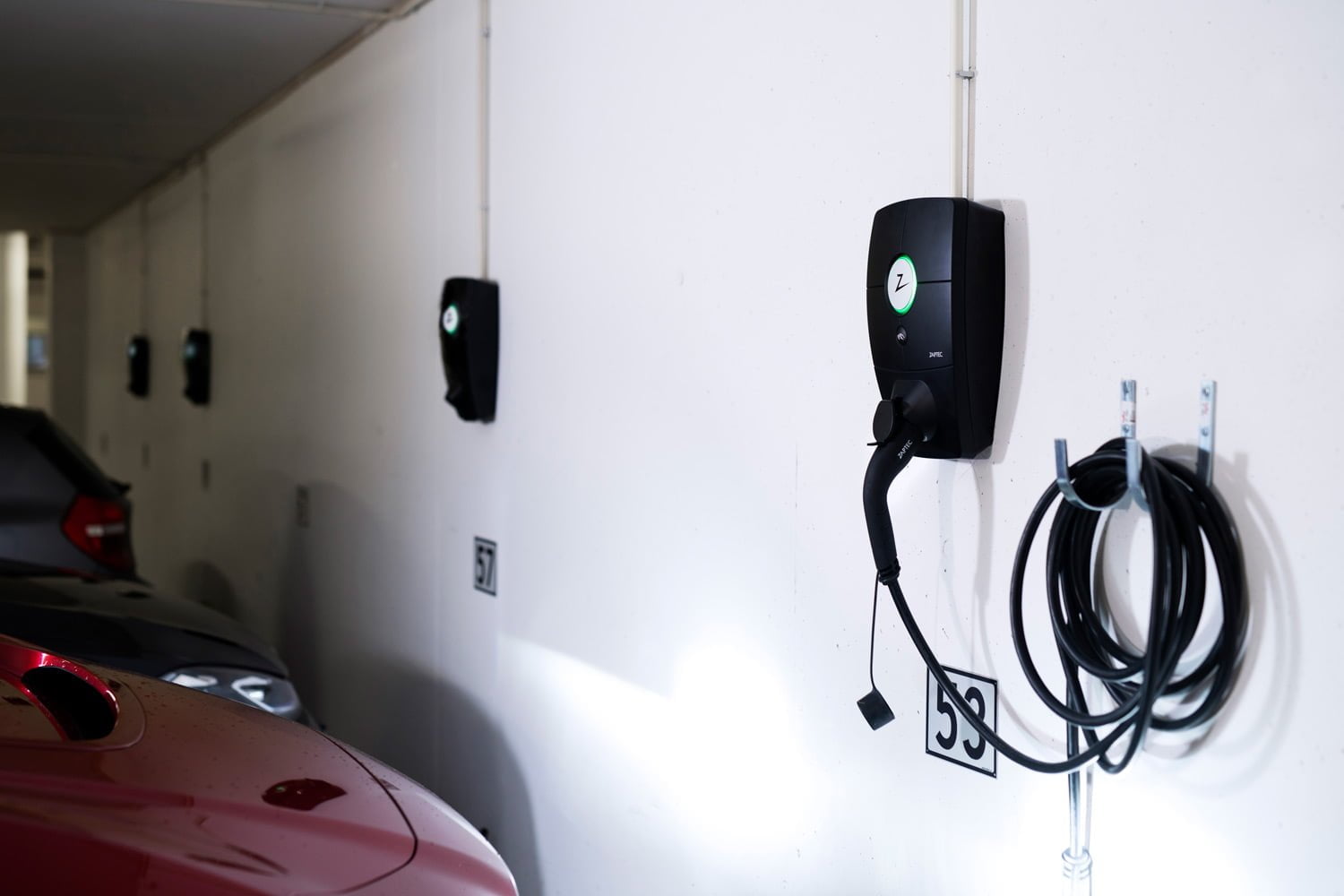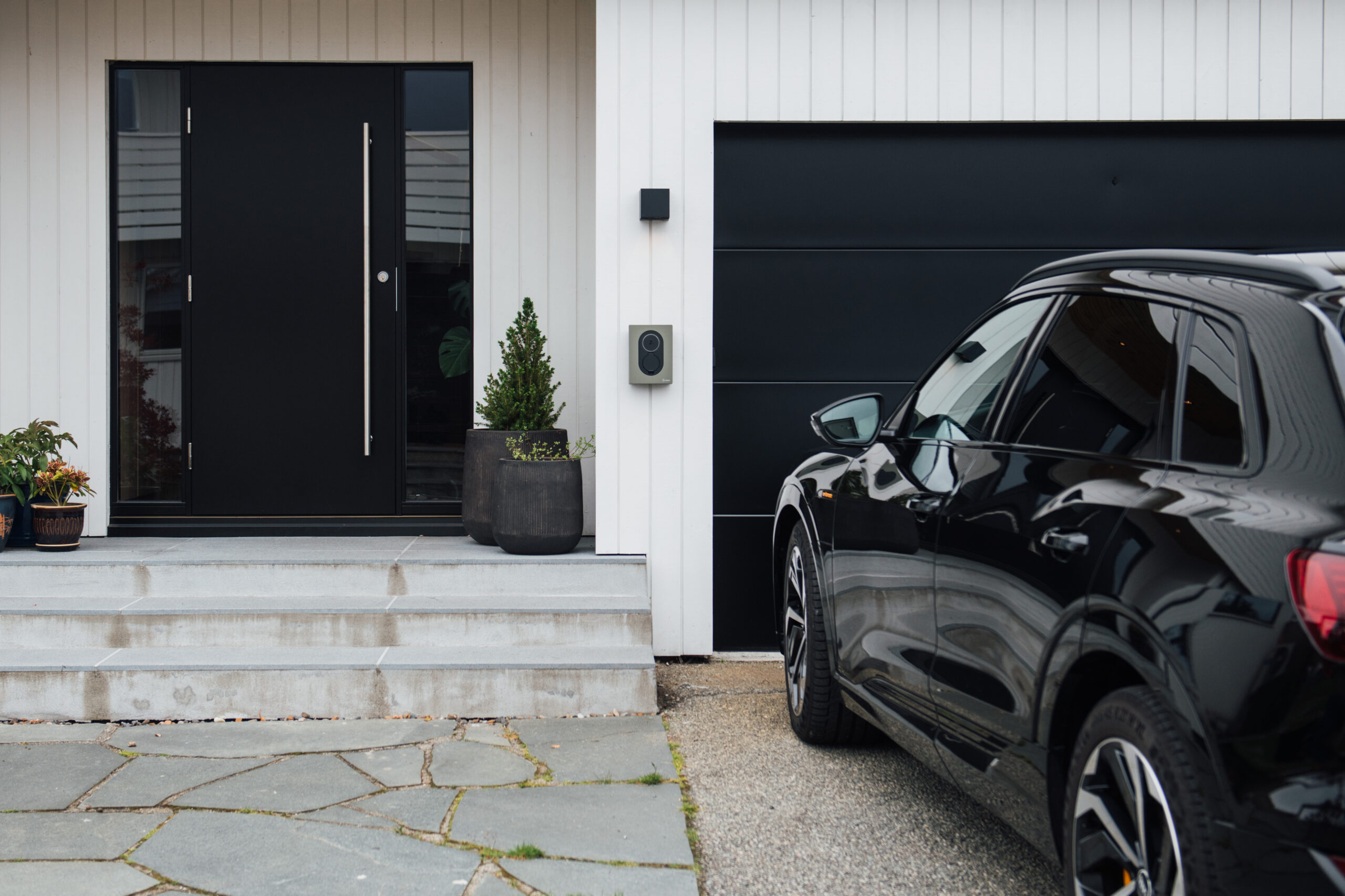We spoke with Fredrik Hegland, charging expert at Zaptec, and asked him what you should consider when you are purchasing an electric vehicle charger:
He notes that the charger must provide a high degree of safety and user-friendliness and that it is important to avoid poor-quality charging stations. Large amounts of power pass through a charging station and it is therefore essential that it is safe to use.
According to Hegland both “dumb” and “smart” chargers are generally equally safe. But the risk associated with a dumb charger is that the fuse could blow due to excessive concurrent power usage.
However, he warns that charging vehicles using an ordinary power socket runs the risk of fire and electric shock, which is very dangerous.

Fredrik Hegland,
Charging expert at Zaptec
Chargers use significant amounts of power. If the circuit does not run directly to the fuse box, the intermediate sources will be potential sources of overheating and any weak points may result in fire.
Further reading: Zaptec has a Guarantee of Safety

Zaptec charging systems are supplied with integrated fuses in each box.
Smart vs. dumb chargers
What is the difference between different charging stations and smart and dumb chargers?
It is crucial to have a smart charging system in housing cooperatives. It’s a bit more flexible for individual homes,” Hegland responds. “The smarter the charger, the better. “You should choose a smart charger to increase safety, security and convenience, he continues.
There are simple, or dumb, chargers available. That is, chargers that cannot be controlled on the basis of other information. They are fairly inexpensive. A lot of people fall into the trap of choosing a dumb charger and then find that fuses start blowing in their home, he says.
Zaptec’s chargers have been designed to provide the highest possible charging speed without blowing fuses, whereas, with a dumb charger, the charging speed must be substantially reduced to prevent fuses from blowing.
A smart charger knows how much power is available and the charging station is allocated more capacity as soon as consumption drops. A dumb charger does not know whether there is any power available.
Some housing cooperatives were quick off the mark and installed dumb chargers. A given capacity is then allocated to the charging stations. The usual charging strength of 16 A x 20-30 charging stations requires extremely high capacity. However, a smart charger does not require much allocated capacity.
NVE has also indicated that it will make grid rent dynamic. The more concurrent power you consume, the higher the grid rent. This means that there is a lot of money to be saved by using smart chargers that postpone charging until consumption levels are low.
Further reading: Zaptec provides safe, smart charging for electric vehicles
Smart electric vehicle charging from Zaptec provides predictability for you and your entire family.
Unique solution
What is phase balancing?
Hegland explains that power cables have three wires that should be used fairly evenly.
But you may find that one wire is often not in use. Our charging station can then move the car onto the wire with most capacity.
That is pretty unique. This results in the quickest possible charging by utilising all available power,” he says.
In dumb chargers, one of the phases is selected during installation. This is important for larger installations, such as at a housing cooperative or co-ownership property, as the ability to move between phases allows you to charge more vehicles without being deadlocked.
Is the system capable of scaling?
We have created a system that is easy to scale. There are no restrictions on how many charging stations you can run on the same fuse. The important factor is how much power is available to the charging system.
Further reading: What to consider when choosing an electric car charger
Ready for the future
Does your charging station support all vehicles?
Our chargers support all vehicles, Hegland confirms.
What about updates to smart meters?
People who bought Zaptec smart chargers four years ago now have a much smarter charger.
Hegland assures us that updates are applied automatically, including software updates and new features.
What about 22 kW charging capacity?
Our chargers support up to 22 kW if there is capacity available. It would probably not be possible to configure a dumb charger to support this.
Any other final advice you would like to share?
Individuals sometimes say they need a charger for a specific vehicle. Instead, the focus should be on ensuring that you have a good charging station that works for all vehicles,” Hegland recommends, particularly as you may switch vehicles at a later date. “For housing cooperatives, features should be just as important as price. Even if you receive a cheap quote, it could quickly become expensive if operating costs, such as grid rent, power tariffs and power factors, have not been considered or if the charging system has to be replaced due to a lack of scalability, he says.
Written by: Gunn Iren Kleppe
Further reading: NEW! Launching a new version of our Market leading charging station for large charging systems




